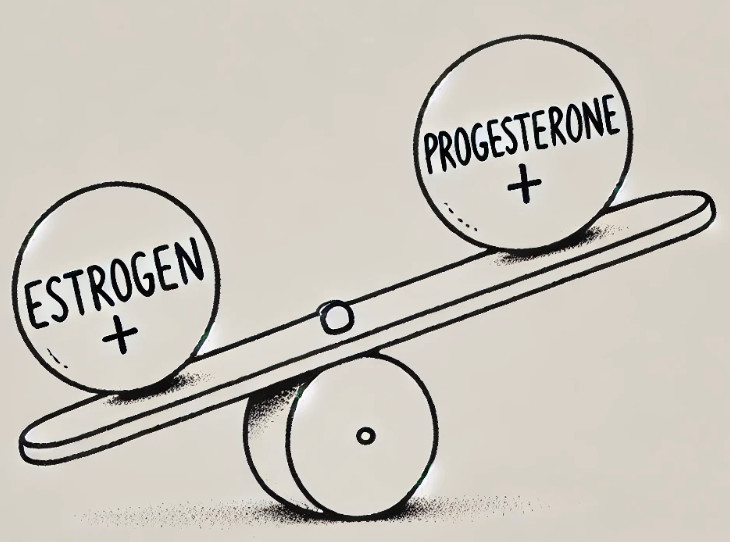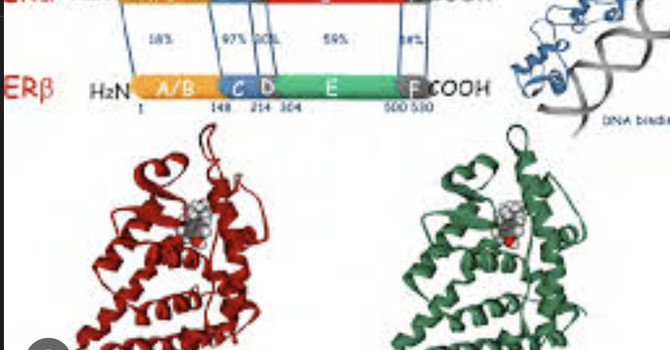
As a menopause expert, I've encountered countless misconceptions about hormonal changes during perimenopause and menopause. One term that has gained traction but is fundamentally flawed is "estrogen dominance." Today, I want to explain why this concept is misleading and propose a more accurate way to understand the hormonal shifts women experience during this transition.
The Misconception of Estrogen Dominance
The term "estrogen dominance" suggests that as women enter perimenopause and menopause, they experience an excess of estrogen. However, this is far from the truth. In reality, both estrogen and progesterone levels decline during this period, with progesterone decreasing more rapidly and significantly than estrogen.
A More Accurate Term: Progesterone Insufficiency
Instead of "estrogen dominance," a more appropriate term would be "progesterone insufficiency." This accurately reflects the primary hormonal change occurring - a substantial drop in progesterone levels relative to estrogen.
The TV and Radio Analogy
To better understand this concept, imagine a room with a TV and a radio playing simultaneously. The TV represents estrogen, and the radio represents progesterone. Initially, both are playing at similar volumes. As perimenopause begins:
- The radio (progesterone) volume decreases significantly or is turned off entirely.
- The TV (estrogen) volume may decrease slightly but remains on.
Even though the TV's volume hasn't increased, it now seems louder in the room because the radio is much quieter or silent. This is similar to what happens with estrogen and progesterone during perimenopause. Estrogen isn't actually increasing or "dominating," but its effects become more noticeable due to the significant drop in progesterone.
Symptoms of Progesterone Insufficiency
Many symptoms attributed to "estrogen dominance" are actually due to the decline in progesterone. These may include:
- Irregular periods
- Heavy menstrual bleeding
- Mood swings and irritability
- Sleep disturbances
- Hot flashes and night sweats
- Breast tenderness
- Weight gain, especially around the midsection
- Decreased libido
- Fatigue
- Headaches or migraines
It's crucial to understand that these symptoms aren't caused by an excess of estrogen, but rather by the changing ratio between estrogen and progesterone as progesterone levels fall more rapidly.
The Importance of Accurate Terminology
Using the term "estrogen dominance" can lead to misunderstandings about treatment approaches. Some may mistakenly believe they need to lower their estrogen levels, when in fact, addressing progesterone insufficiency might be more beneficial. By recognizing that the issue is primarily a progesterone deficiency, healthcare providers can offer more targeted and effective treatments.
Conclusion
As we continue to advance our understanding of menopause and hormonal transitions, it's crucial to use accurate terminology. "Progesterone insufficiency" more correctly describes the hormonal changes occurring during perimenopause and menopause than "estrogen dominance." This shift in perspective can lead to better-informed treatment decisions and improved outcomes for women navigating this significant life transition.Remember, every woman's experience with perimenopause and menopause is unique. If you're experiencing symptoms, consult with a healthcare provider who specializes in menopause management to develop a personalized treatment plan that addresses your specific needs.
Dr. Anat Sapan MD, specializing in peri/menopause care, advocates for a personalized approach combining Bioidentical Hormone Replacement Therapy with lifestyle strategies. Her telemedicine services in California, Florida, Illinois and New York. I aim to help women overcome menopausal symptoms and enhance their quality of life.

Anat Sapan, MD
Contact Me



